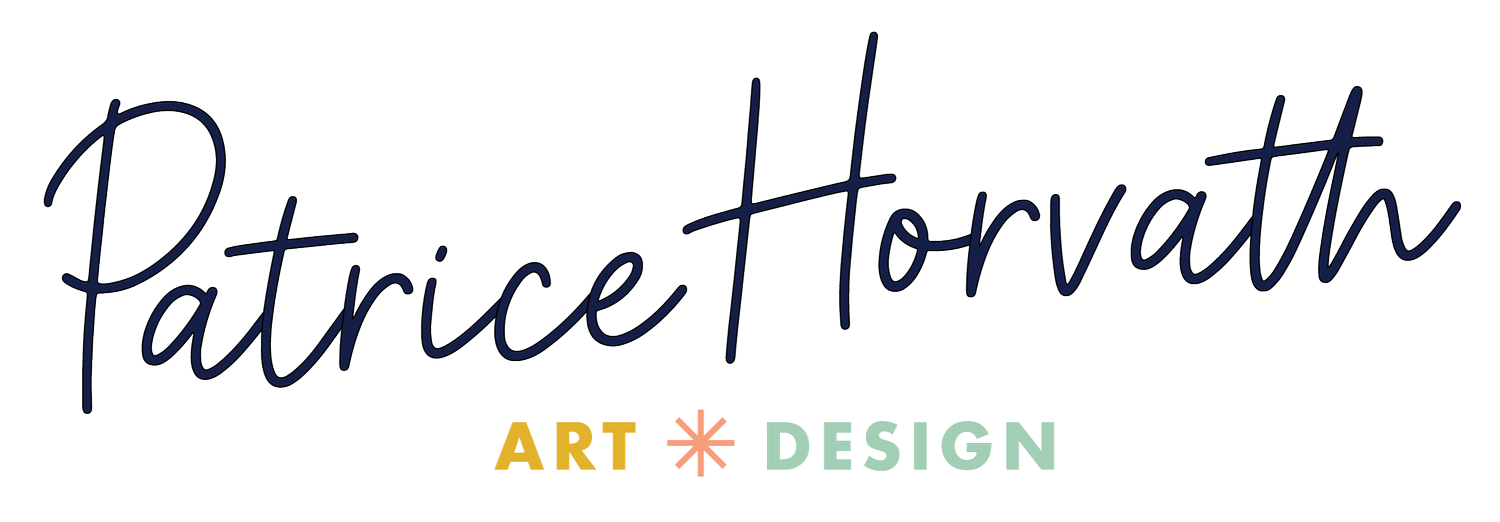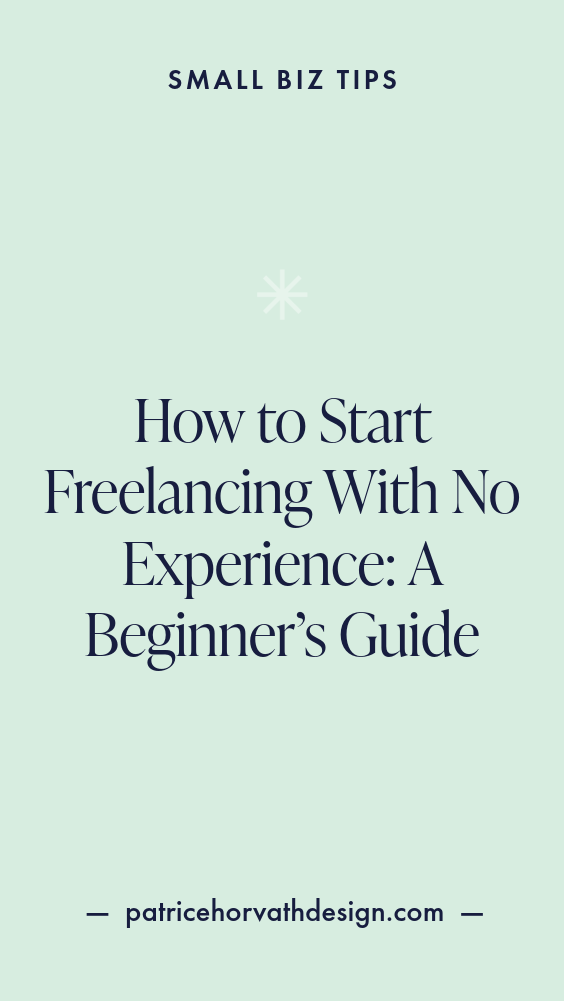How to Start Freelancing With No Experience: Beginner Guide
If you’ve ever typed “how to start freelancing with no experience” into Google, you’re not alone. It’s easy to feel like freelancing is only for people with amazing skills and experience or impressive client lists. But here’s the truth: everyone starts somewhere.
When I was a graphic design student, I knew I wanted more than class projects—I wanted real freelance work. But I didn’t have clients yet. I didn’t have years of experience. What I did have was motivation, a creative skill set, and a willingness to put myself out there.
Fast forward to now: I’ve run my own branding and Squarespace design business for 10 years, working with small businesses across New Jersey and beyond. And I created tools, like my Freelance Proposal Templates, specifically to help creatives like you become a freelancer and land those first clients with confidence.
In this guide, I’ll walk you through exactly how to go from beginner to having a freelance career, even if you’re starting from scratch.
Yes, You Can Start Your Freelance Job With No Experience (Here’s Why)
Let’s bust the biggest myth first: you don’t need experience to start freelancing.
Think about it—every freelancer, no matter how successful they are now, had to start somewhere. The secret? They started to hustle before they felt ready.
What clients really care about is whether you can help them solve a problem. If you’re a student who knows how to design a logo, write engaging social media posts, or build a simple website, you already have something valuable to offer potential clients.
Freelancing isn’t about waiting until you’re perfect. It’s about showing up professionally and being clear about how you can help.
Step 1 – Choose a Service Based on What You Already Know
You don’t need to reinvent yourself to start freelancing. The best place to begin is with skills you already have.
Start by taking inventory:
What do you enjoy doing in your free time?
What software or tools are you already comfortable using?
What kind of feedback have you gotten on school or passion projects?
Real Examples:
A graphic design student who loves branding could offer logo packages or social media graphics for local businesses.
A copywriter who’s written blog posts for school could offer blog writing or newsletter editing.
A college student who organizes campus events could transition into a virtual assistant role—handling scheduling, inbox management, or social media.
A photography hobbyist could edit photos, create Lightroom presets, or offer retouching for small brands.
You don’t need to be an expert—just someone who can help with a specific task. Start small. Clarity beats complexity.
Step 2 – Learn Just Enough to Get Started
It’s tempting to spend months (or years!) perfecting your craft before launching. But here’s the thing: you don’t need 10 certifications to be a freelancer. You just need to solve one problem well.
Beginner-Friendly Tools to Explore
If you’re starting from scratch, don’t worry—you don’t need a whole tech stack to get started. Many beginner freelancers use just 1–2 tools to launch their services.
Here are a few simple tools to explore based on the type of service you want to offer:
For Brand Designers:
Start with Canva if you’re brand new to design—it’s beginner-friendly, free, and comes with tons of pre-made templates. As you get more comfortable, consider moving into Figma or Adobe XD to build more customized branding systems.
For Web Designers:
Squarespace is an ideal platform for new web designers. It’s intuitive, beautiful, and doesn’t require coding. If you’re drawn to more creative freedom, Showit and Wix are also great drag-and-drop options to explore.
For Writers and Content Creators:
You’ll need Google Docs (for copywriting and collaboration), Grammarly (to polish your writing), and possibly Notion to organize content ideas, outlines, and drafts.
For Virtual Assistants:
Tools like Google Workspace, Notion, Trello, or Airtable are key for staying organized and managing tasks. If you’re supporting clients with inbox or calendar management, Gmail and Google Calendar are your best friends.
For Social Media Managers And Digital Marketers:
Use Canva to design graphics and Planoly or Later to schedule posts. These tools allow you to manage content for clients and show up consistently online without posting manually every day.
The best part? Most of these tools are either free or offer generous free plans. You don’t need to pay hundreds of dollars a month in software just to start freelancing or gain experience, you just need to pick one lane and get comfortable with it.
Step 3 – Create Your First Freelance Portfolio (Even Without Clients)
Yes, you can build a portfolio without ever working with a client. Your portfolio is about showing what you can do—not what you’ve been paid to do.
How to Build Your Beginner Portfolio
Create Projects for Fictional Brands
Design a brand identity, website homepage, or flyer for an imaginary coffee shop or local boutique. Treat it like a real client brief.Use Class Projects (If You’re a Student)
If your work was polished and on-brand, reuse it! Tweak it to match a business niche you want to serve.Volunteer for Nonprofits or Friends
Offer to design a one-pager, write an email, or build a mini website in exchange for a testimonial.Build a Mini Portfolio Website
Use Squarespace, Carrd, or Notion to create a clean, professional place to show your work. Keep it simple—no need for 10 projects. Even 2–3 solid pieces are enough to start.
What to Include With Each Project:
Project name & type
Short description (what the goal was)
Tools used
Your process or decisions
Mockups or before/after visuals
Need inspiration? Check out my post on how to start a graphic design business for more creative ideas and tips. Learn how to start freelancing with no experience.
Step 4 – Send a Proposal That Gets You Hired
You’ve got your portfolio. Now it’s time to pitch a new client. A professional proposal helps you stand out—even if you’re brand new.
What to Include in Your Freelance Proposal
Introduction
Briefly introduce yourself and what you do.Project Overview
Reiterate your understanding of the client’s needs.Deliverables
List what they’ll get (e.g., 3 logo concepts, 1 brand style guide).Timeline
Outline how long the project will take and key milestones.Investment
Share pricing clearly by setting a freelance rate. If you’re offering a beginner discount, frame it as a launch rate, not a lack of skill.Next Steps
Let them know how to accept, move forward and get paid.
To make this easy, I created Freelance Proposal Templates designed specifically for creatives who are just getting started and want to know how to start freelancing with no experience. They’re beautiful, customizable, and have helped dozens of freelancers land their first (and next!) clients.
Step 5 – Where to Find Work and Your First Freelance Clients
This is where the real growth happens. Your goal isn’t to “get big” overnight—it’s to land that first client. Here’s where to look:
Online Platforms
Upwork – Ideal for building experience. Focus on smaller jobs with fast turnaround.
Contra – A more design-forward platform, great for creative freelancers.
Fiverr – Good for small tasks and portfolio building.
Share your work consistently
Use stories to talk about what you offer
Use hashtags like #smallbusinessdesign or #freelancerforhire
Create highlights with testimonials or past projects
Don’t overlook LinkedIn—it’s a powerful place to connect with professionals who actually need your services. Start by optimizing your profile headline (e.g. “Freelance Brand Designer for Small Businesses”), share sample projects or behind-the-scenes content, and let your network know you’re available. Even commenting on posts from potential clients or collaborators can open doors.
Local Leads
Reach out to small businesses near you (cafes, yoga studios, salons)
Offer a service like a brand refresh or flyer design at an accessible rate
Print mini business cards or offer your help in local Facebook groups
Outreach Example:
Hi [Name],
I’m a [service] freelancer just starting out, and I came across your [business/Instagram page]. I’d love to offer [specific service] that could help [benefit].If this sounds interesting, I’d be happy to send over a quick proposal!
Best,
[Your Name]
You never know who’s looking for help until you ask.
FAQ – Common Questions About How To Start Freelancing With No Experience
Can I do freelancing without experience?
Absolutely. You just need to package your current skills, create samples or mock projects, and approach clients with confidence. Freelancing is more about trust and problem-solving than your resume.
How do I start freelancing for beginners?
Pick one skill you enjoy
Build 2–3 portfolio pieces
Set up a proposal template
Tell people what you do
Apply or pitch consistently
Starting is often the hardest part—but it gets easier with every pitch you send.
What is the easiest job in freelancing?
Here are a few beginner-friendly roles:
Social Media Manager – Schedule posts, write captions, digital marketing
Virtual Assistant – Handle inboxes, data entry, appointment booking
Canva Designer – Design social graphics, business cards, flyers
Content Writer – Blog posts, product descriptions, email content
The key is choosing a service with low overhead, that you can offer confidently and improve over time.
Which skill is easy to learn in freelancing?
Some easy-to-learn and in-demand freelance skills include:
Canva – Graphic design without needing Adobe
Squarespace – Drag-and-drop website building
Notion – Great for organization and virtual assistant tasks
Grammarly + Google Docs – A strong combo for writers and editors
You can learn most of these tools within 1–2 weeks of focused effort.
Is freelancing very hard?
Full-time freelancing can be challenging—but it's also flexible, empowering, and creative. The hardest part is often building momentum in the beginning. With consistent outreach, polished presentation (hello, proposal templates!), and patience, you’ll grow over time.
You Don’t Need Experience — Just the Right Start
Let’s recap:
You don’t need a stacked resume or years of client work to get into freelancing. Wondering how to start freelancing with no experience? What you do need is:
A skill you enjoy
A basic portfolio (even mock projects count!)
The right tools to present yourself professionally
The willingness to put yourself out there and to want to work
With those in place, your first client is closer than you think.
Start by choosing a service you enjoy, build a starter portfolio, and use templates like my Freelance Proposal Templates to land your first gig.

